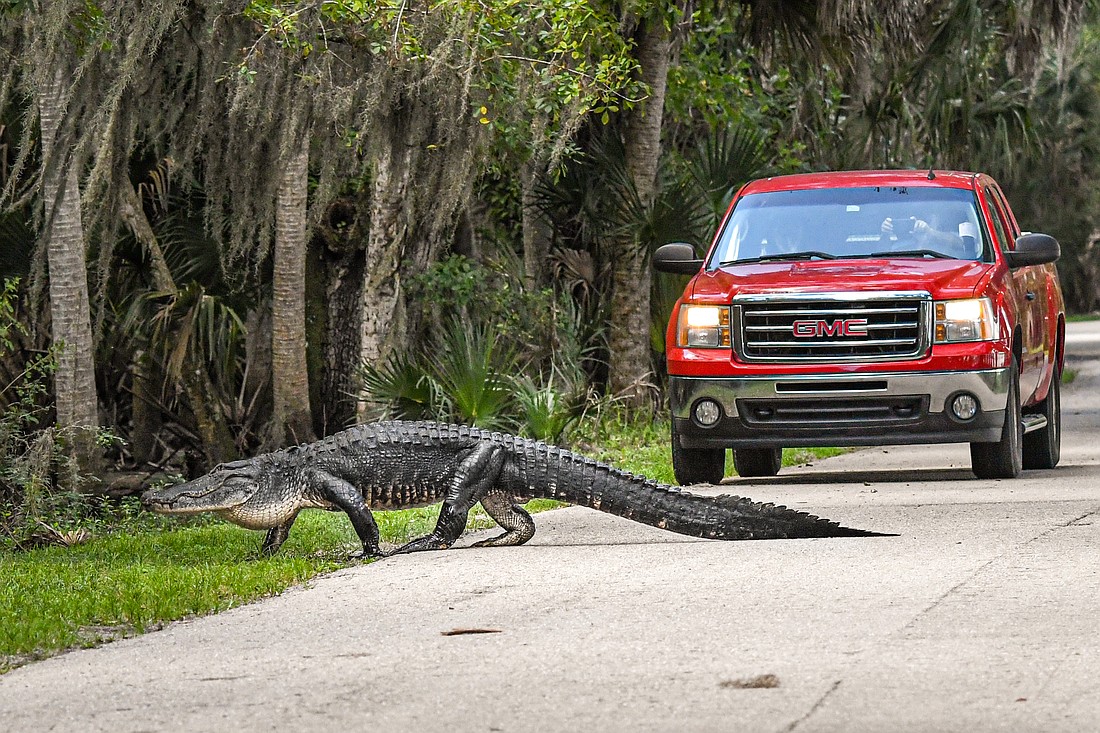- April 4, 2025
-
-
Loading

Loading

As a rain-fed river, the wild and scenic Myakka River dramatically illustrated over recent months how its levels are affected by precipitation — or the lack thereof.
After historic flood levels associated with Hurricane Ian rainfall then little to no rain over the past few months, water levels in Myakka River State Park have significantly dropped and are currently very low. Myakka's wetlands, which absorb and slow floodwaters during periods of excessive rain, are drying up as well.
When water levels in Myakka's floodplain marshes and wetlands are high, American alligators spread out and enjoy their expanded habitats. Considered almost extinct in the 1950s and '60s due to habitat loss and hunting, these iconic, critical members of our region's ecosystems depend on wetlands, and our Florida ecosystems depend on them.
As apex predators, alligators help control rodent populations and other animals that might otherwise overtax marsh vegetation. The “gator holes” that adult alligators create and expand through the years stay full of water even after the rains stop. By providing vital water for themselves, as well as for many other species, American alligators help keep unique Florida ecosystems at Myakka and beyond healthy for years to come.
This time of year, late in our dry season, the chance increases of encountering an alligator making its way from drying wetlands back to rivers or other wet locations. They're also more likely to be visible, due to lower water levels, the onset of breeding season and warmer (but not oppressively hot) temperatures, all of which result in higher levels of activity for these cold-blooded reptiles.
For everyone’s safety, if you encounter an alligator on the move, give it plenty of space — at least 25 feet is recommended — and don't try to hurry it along. Also, as is the law, never harass or feed alligators. When alligators are fed, they lose their natural wariness of humans and start to associate people with food. Because dogs and cats are the same size as natural alligator prey, keep them well away from possible alligator habitats.
Friends of Myakka River exists to support Myakka River State Park and the Wild and Scenic Myakka River. Together, we're protecting and sharing Myakka's Magic, to the benefit of future generations, and our own. Follow us @FriendsofMyakkaRiver.